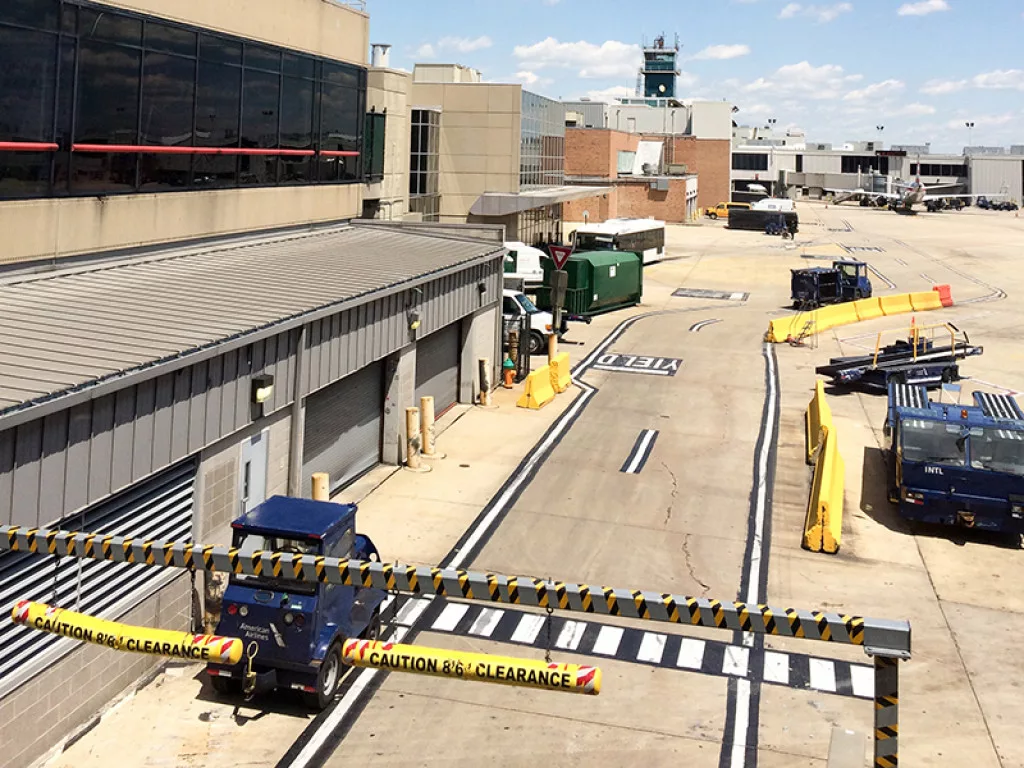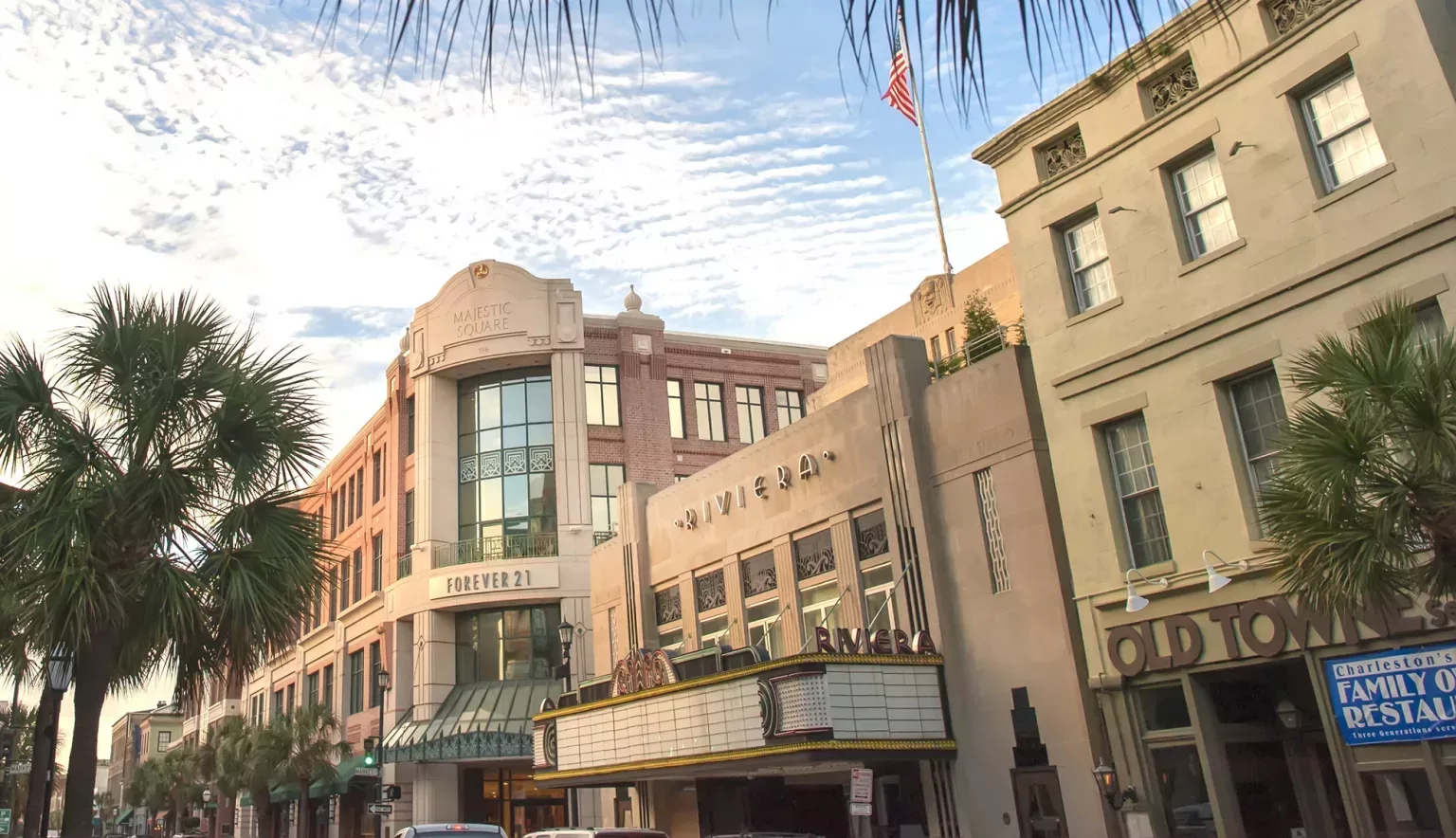Laden with American heritage, historical treasures, and a rich culinary legacy, discover Charleston, the cultural heartland of the Deep South.
CHARLESTON
In the Lowcountry of South Carolina, the city of Charleston is a true gem. Imbued with Southern charm, the second largest – and arguably best preserved – historic district in North America boasts antiquated mansions flanked with palm trees lining cobblestone streets where horse and carriage rides await.
Few destinations in the US can surpass Charleston in terms of its historical legacy since its settlement as ‘Charles Towne’ by British colonists in 1670. The city combines many rich and varied layers of history, from the evocative Old Exchange and Provost Dungeon – an underground prison once stormed by Blackbeard himself – to the birthplace of the American Civil War at Fort Sumter. Meanwhile, the many steeples piercing the Charleston skyline testify to its namesake ‘The Holy City’. Beyond Charleston, discover inviting stretches of coastline that are ideal for a longer stay, combining city and beach.
For all its eye-catching aesthetics, the history of Charleston and the conspicuous wealth evident in its architecture is inseparable from the origins of slavery and subsequent plight of the former enslaved African American community. Multiple cultural sites within the city, whether its many museums or mansions where slave quarters remain intact, offer an authentic insight into this period. The legacy of this generation is still tangible in the rich culinary heritage of Gullah cuisine, offering soulful recipes blended with local ingredients, like the signature dish of okra gumbo. Elsewhere, savour Southern classics, including mac ‘n’ cheese or shrimp and grits.
From the devastating fires and major earthquakes that wreaked havoc on Charleston in the 19th century to the onslaught of the Civil War, Charleston has a legacy of resiliency and enduring conflict. Now, in the wake of the COVID-19 pandemic, the city’s tourism sector is no different. Come to Charleston for a taste of classic Southern hospitality.
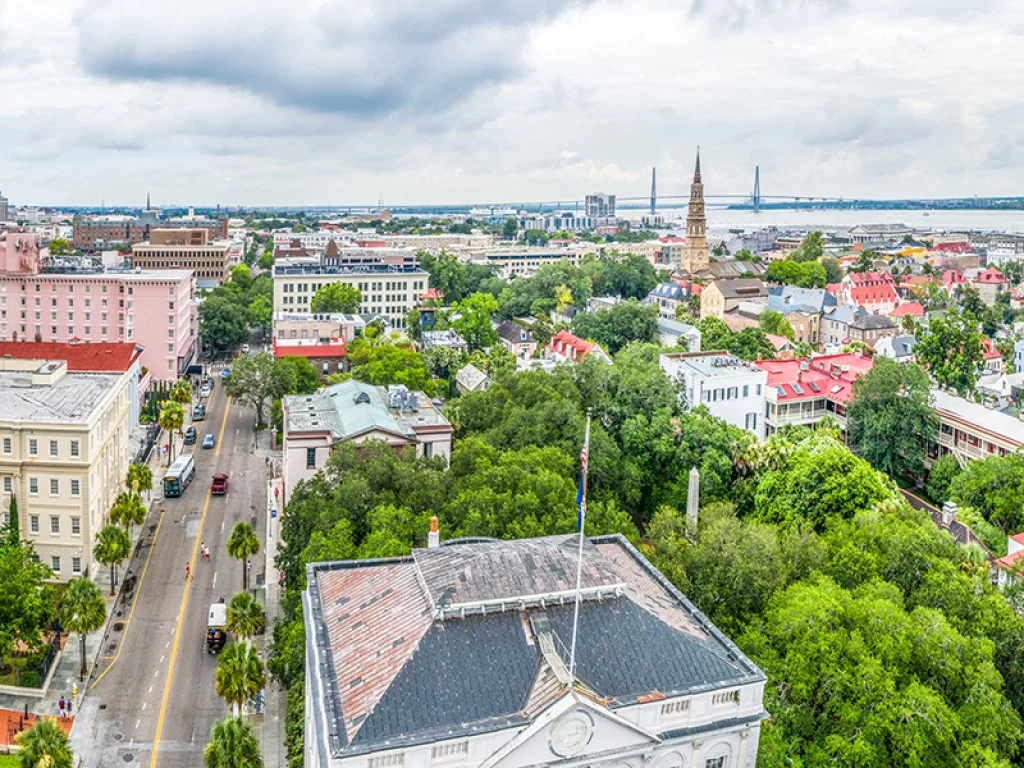
TOURISM INSIGHTS: CHARLESTON AREA CONVENTION AND VISITORS BUREAU
For the past 30 years, the Charleston Area Convention and Visitors Bureau (Charleston CVB) has been committed to sharing the charm of one of America’s top travel destinations. Supporting the long-term development of communities through sustainable tourism marketing and management strategies, Charleston CVB represents municipalities within Charleston and Berkeley Counties in South Carolina. We peel back the layers of historic Charleston as an overnight destination with Vice President of Media and Innovation at Charleston CVB, Douglas Warner.
Q&A WITH DOUGLAS WARNER, VICE PRESIDENT OF MEDIA AND INNOVATION, CHARLESTON CVB
Can you talk us through the Bureau’s inception and its initial vision?
Douglas Warner, Vice President of Media and Innovation (DW): We’re a 30-year-old destination management organisation (DMO). We exist to market our region, which covers 10 different municipalities, including the city of Charleston and the wider area.
What are the organisation’s current goals?
DW: To increase the economic footprint of visitors within our community and its businesses. It’s not necessarily about increasing the number of visitors but rather the economic footprint of those who do.
How do you market Charleston and the wider region as a destination for business and leisure travel?
DW: We focus on several key pillars that make Charleston attractive to visitors. History is always top of the list – we’re the most European of American cities, and it’s hard to find more American history than exists in Charleston. Aside from this, we focus on the culinary scene, arts and culture, our beaches and outdoor activities, and shopping.
What trends are currently re-shaping tourism in Charleston?
DW: The trends that we are seeing are more infrastructure based. Our airport has seen tremendous growth in seat availability and direct fly markets. We had a direct route to Heathrow with British Airways up until the COVID-19 pandemic, which is unusual for a non-island city of our size, and we hope it will come back soon. Despite being a city with just under one million population, we serve 60 direct-fly cities out of Charleston.
Could you tell us more about your appeal to Northern Europe and the UK markets?
DW: There were originally three walled cities in North America; St. Augustin, which was Spanish, Quebec City, which was French; and Charleston, which was the original English walled city. King Charles gave this property to the Lord’s Proprietors, so our connection is strong. Our earliest settlers were the English colonists from Barbados, and our number one international visiting partner has always been the UK, followed by Germany. We are seeing a huge economic investment here from Northern European companies, like Volvo North America, and our travel business follows that model.
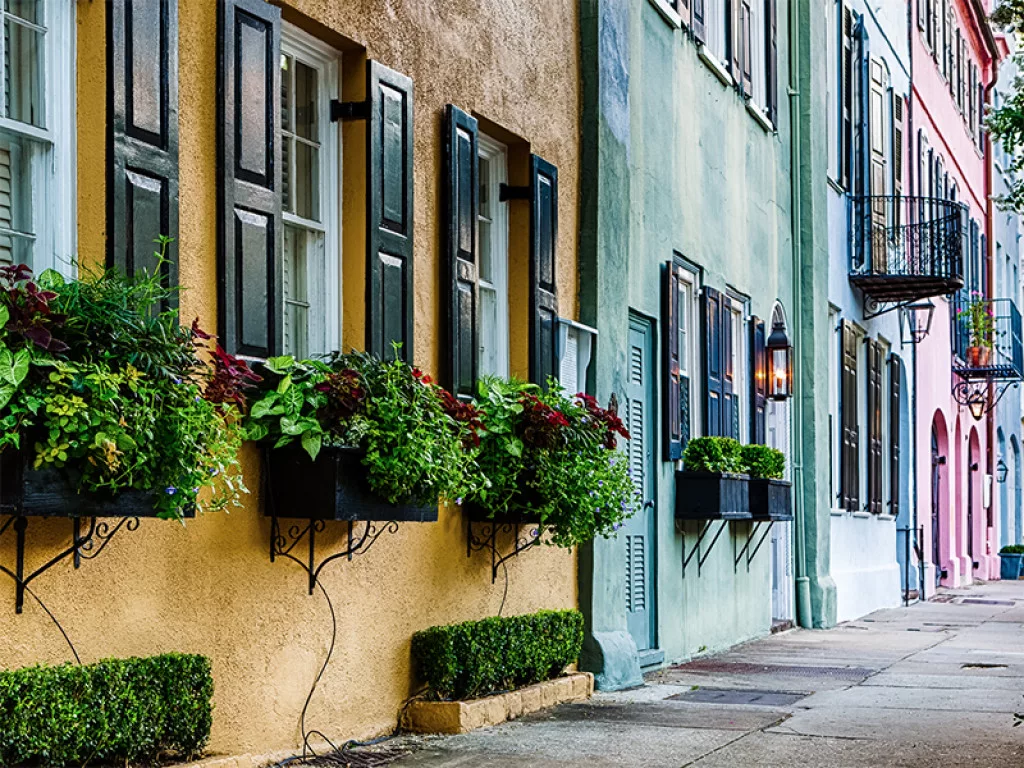
Are you optimistic about tourism’s recovery in Charleston following the COVID-19 pandemic?
DW: We’re extremely optimistic. Our numbers already show that for Charleston, each time our community has seen a major crisis, we have found a way to elevate ourselves. It happened with Hurricane Hugo in 1989, with our base closure in 1991, and we are seeing the same thing again. But our demand is higher now than it was pre-COVID-19. A lot of it is because of the increase in air services. Airlines pulled their assets, from business travel markets and reassigned them to leisure travel markets like Charleston. We were a beneficiary of that.
Are there any projects ongoing in Charleston that you would like to highlight?
DW: There are several taking place in our community that are of interest to the visiting public. The first is the opening of the International African American Museum (IAAM) in January 2023. IAAM will be this country’s most comprehensive museum on the African American experience – it begins with the arrival of the first enslaved people, and the museum is being built on the actual docks where 60 percent of the enslaved African people landed on this continent.
We’ve also got some major infrastructural developments that will come online within the next two years, including the construction of the Cooper Hotel, the renovation of The Charleston Place Hotel, and the completion of the Daniel Island Tennis Center, home of the Volvo Car Open women’s tennis tournament.
OUTLOOK RECOMMENDS
DO:
For bringing history to life…
The Sound of Charleston – Music has defined the past 350 years in Charleston. An unmissable destination, experiencing a live performance in this circular congregational church – through gospel, Gershwin, Civil War songs, and jazz – will bring that history to life through a rich and diverse musical heritage. Book tickets in advance so you don’t miss out.
SLEEP:
For local character in the historic district…
Hotel Emeline – This noble hotel is a Charleston classic. Expect modern detailing combined with elegant design in a tasteful setting, where one may wake to the sound of horse hooves on the cobblestone streets outside. Offering the finest southern hospitality, the on-site café Clerks Coffee is a coffee and culinary destination in its own right.
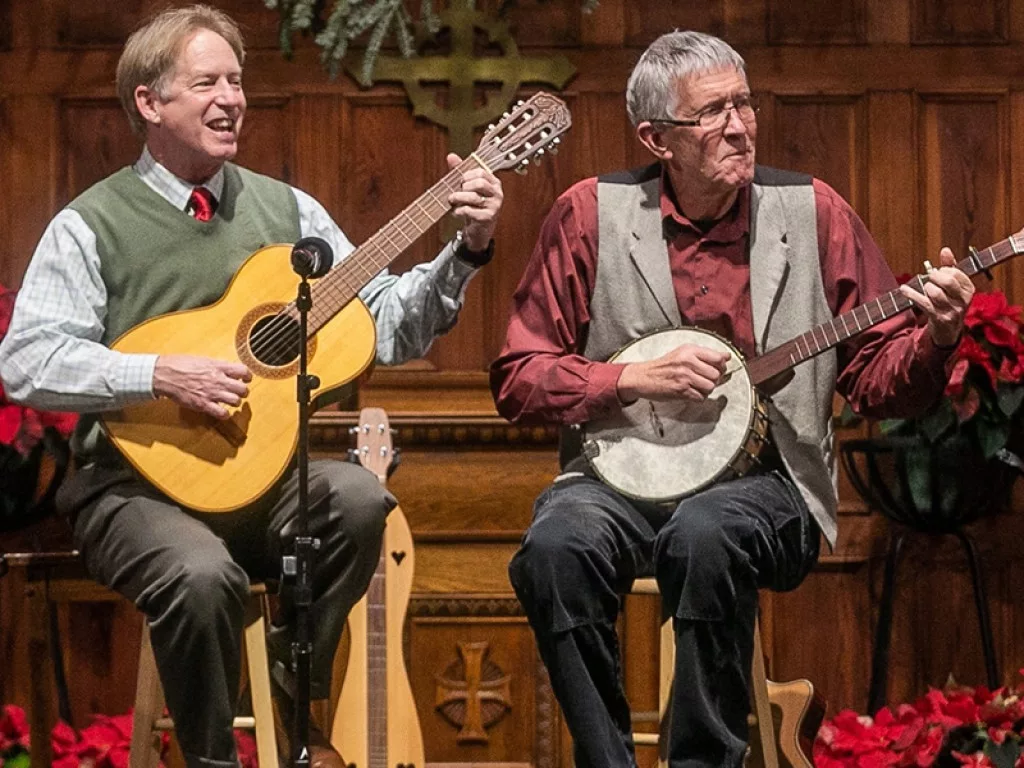
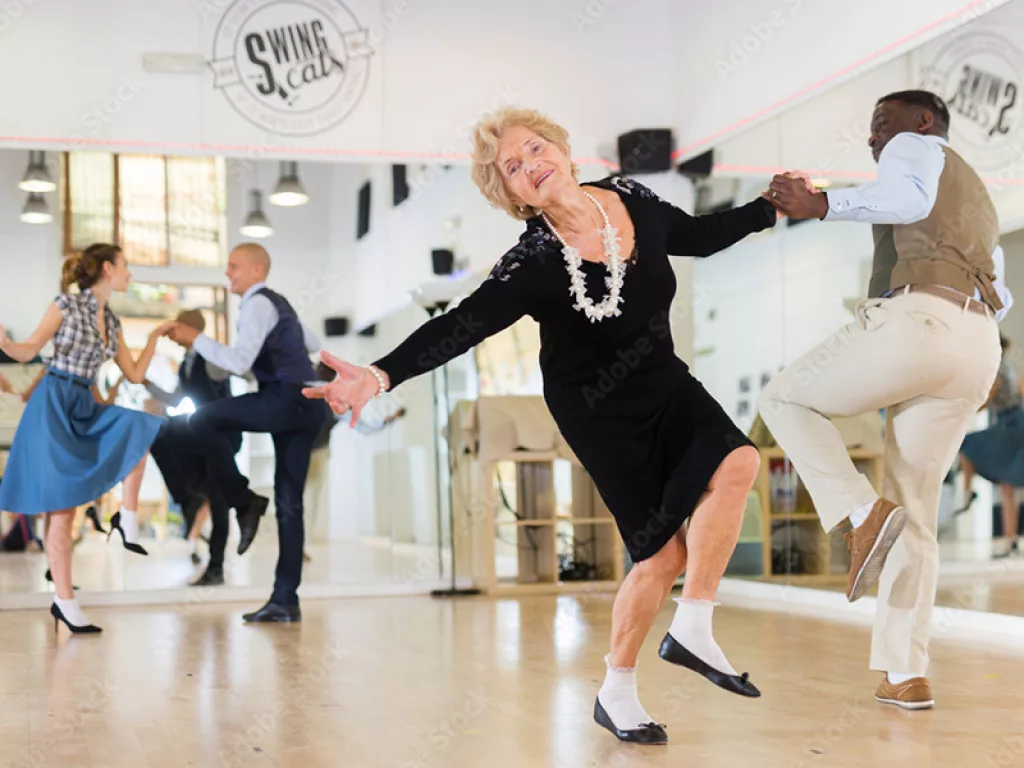
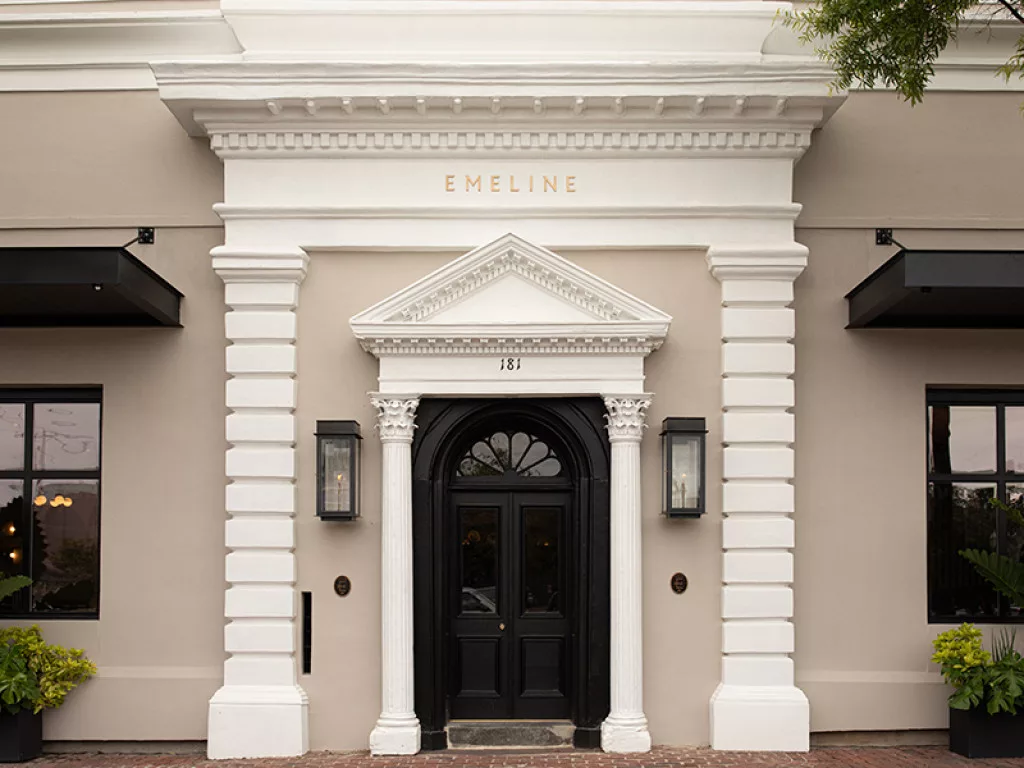
FOCUS ON CHARLESTON ARCHITECTURE
Charleston is a city renowned for its architecture. With over 2,500 historic buildings in the downtown area, eight different schools of architecture prevail: Colonial, Georgian, Federal, Classical Revival, Gothic Revival, Italianate, Victorian, and Art Deco.
Each is intrinsically linked to a historical period and a direct reflection of Charleston’s cultural evolution – from the Neoclassical charm of Manigault House to the historic Edmondston-Alston House, which has stood on the harbourside since the great earthquake of 1886 and on through the American Civil War.
The city’s historic district occupies the peninsula’s tip, where careful restoration efforts continue to preserve its unique cultural identity. Here, tall and narrow houses are packed cheek-by-jowl, elegantly decorated with wrought-iron balconies, broad piazzas (or porches), characterful shutters, and flanked with leafy courtyards.
Arguably the most iconic buildings here are the pastel-hued mansions built in the ‘Charleston Style’ typical of the 18th century. This distinctive fashion is derived from the West Indies, where early British colonists were inspired by high-ceilinged houses designed to stay cool and sprawling piazzas on every level.
The picture-perfect Rainbow Row shows that colour is a significant element in Charleston’s aesthetic appeal. These merchant houses were given a colorful revamp in the aftermath of the Civil War, when the area had become rather downtrodden and dreary.
Many of the homes throughout downtown Charleston have plaques that explain their architectural origins, and resident Charlestonians are well-used to passers-by pausing to admire their dwellings. For architecture enthusiasts, a walking tour or carriage ride is highly recommended.
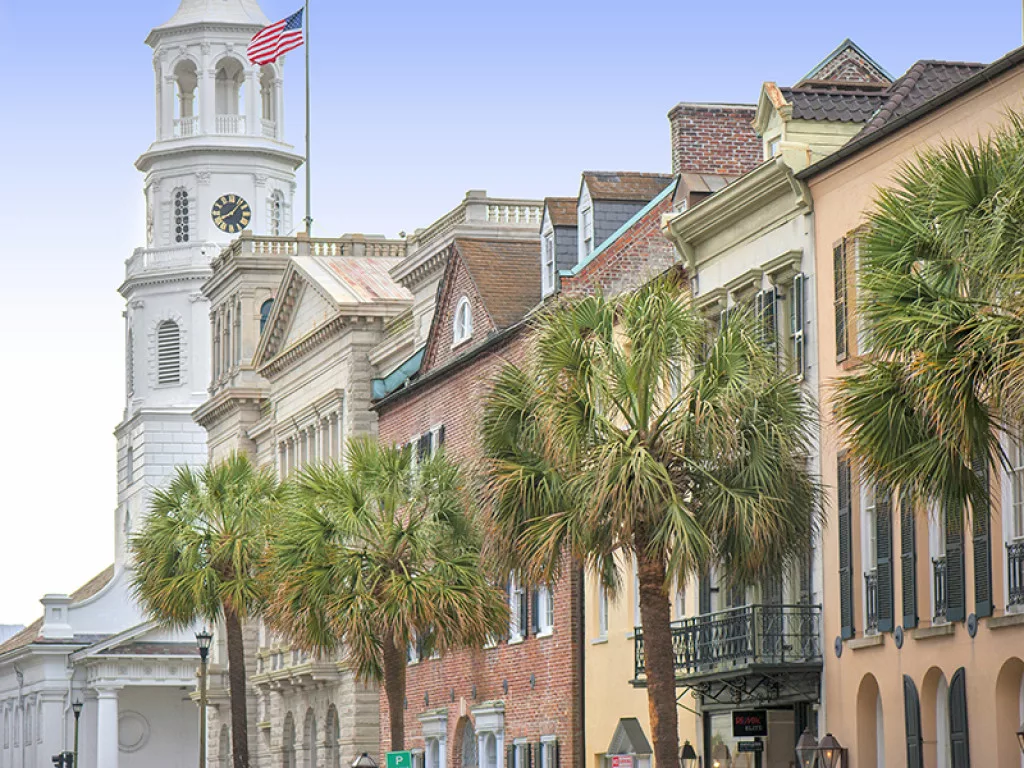
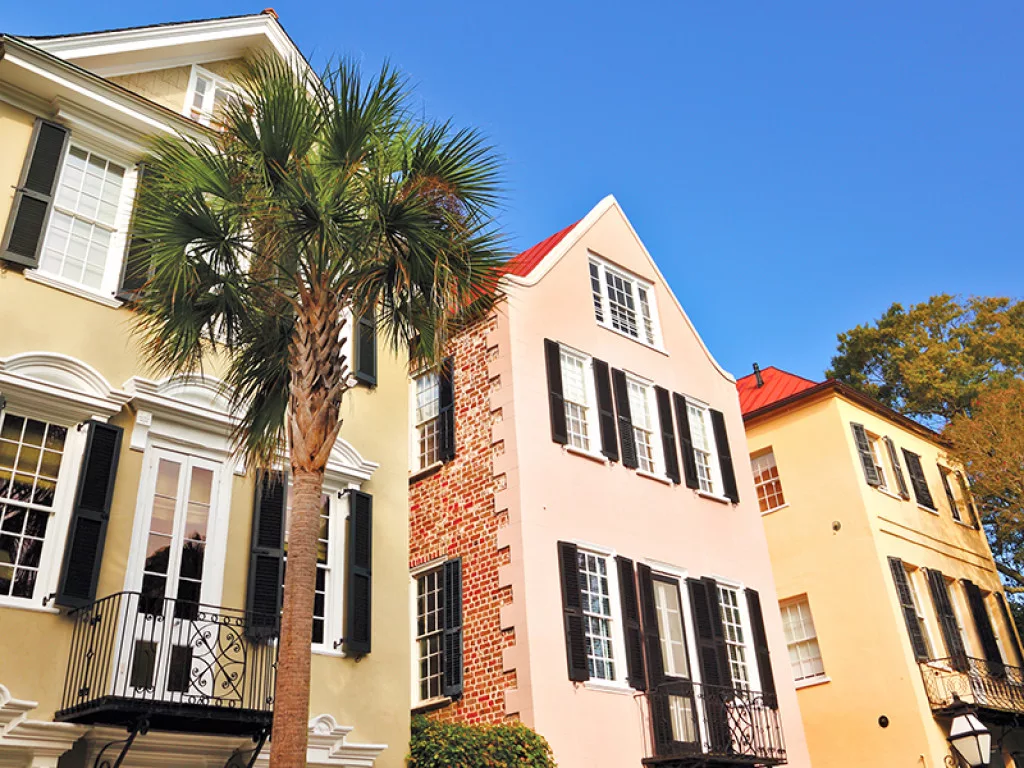
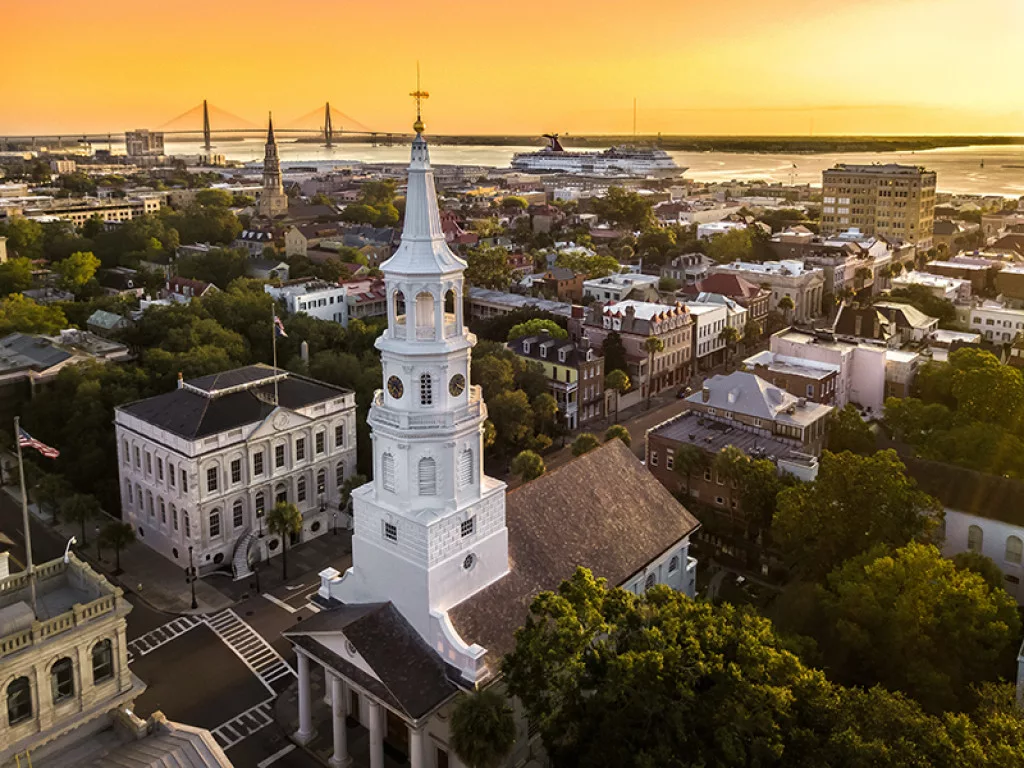
LANDMARK ATTRACTIONS
Fort Sumter National Monument
This historic spot marks where, on April 12th 1861, the first shot of the American Civil War rang out. Fort Sumter became a Confederate stronghold and symbol of Southern resistance, receiving significant shelling from Union forces in the years that followed. Located on a manmade island in the waters of Charleston’s harbour, the monument is accessible only by boat tour.
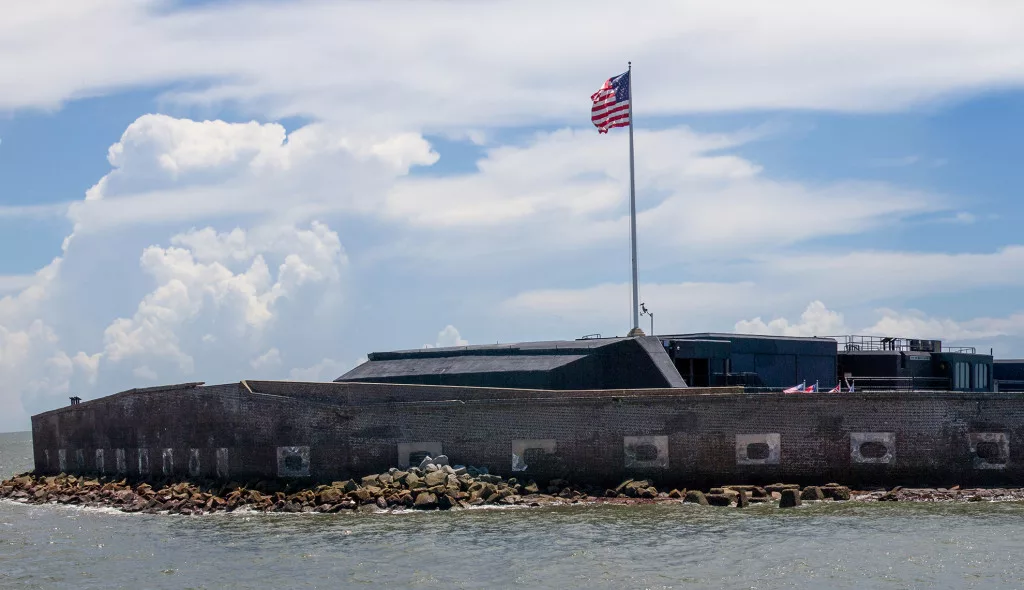
Aiken Rhett House
One of the best-preserved townhouse complexes in the country, this historic home is a poignant reminder of urban life in antebellum Charleston. A house built on the wealth of chattel slavery in 1820, you can still visit the virtually untouched quarters of the enslaved Africans that once lived here alongside its powerful owners. The audio tour is recommended for real historical insight.
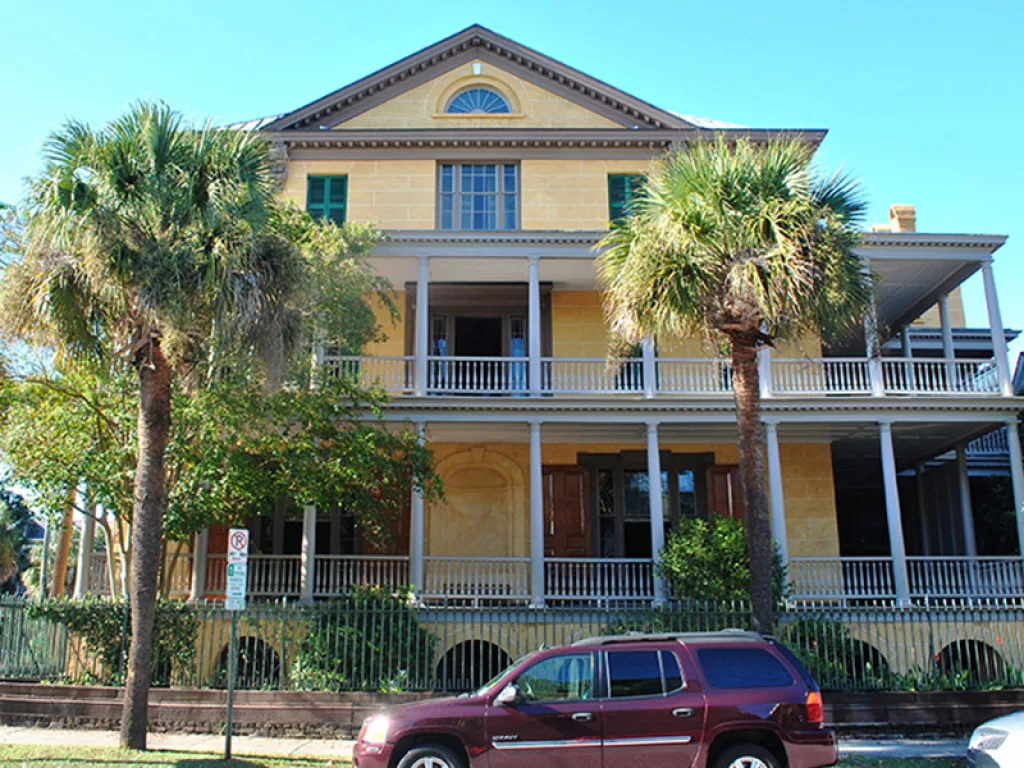
Magnolia Plantation and Gardens
Open to visitors since 1870, these are the oldest public gardens in the US. Just a half-hour drive from Charleston, parts of these gardens have continued to flower since before the American Revolution. Originating as a rice plantation owned by the Drayton family, tour the house for insight into plantation life, or stroll along picturesque pathways that look fresh out of a Monet painting.
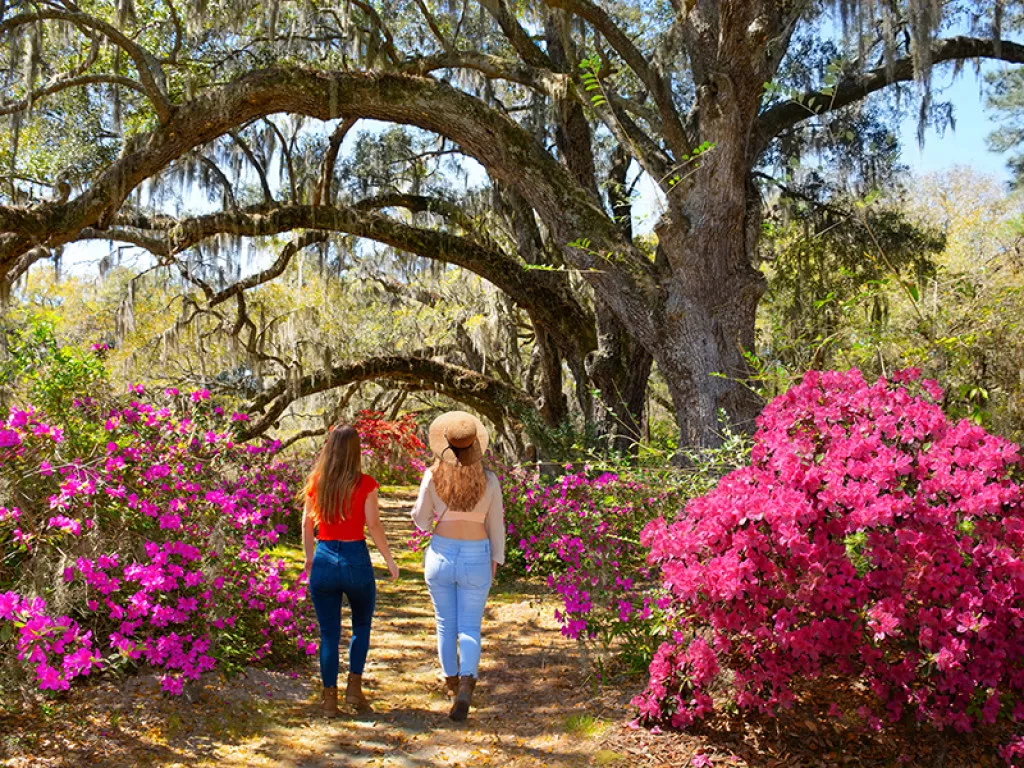
GETTING THERE AND AROUND
Charleston is just a two-hour plane ride from the major US airports of JFK and LaGuardia. Daily non-stop flights are available from 37 US and UK cities to the recently renovated and expanded Charleston International Airport (CHS). CHS is located roughly 11 miles from downtown Charleston and is easily accessible by car, taxi and shuttle. For taking in the sights of the downtown area, the DASH Shuttle is a quick, easy, and (best of all) free, option.
